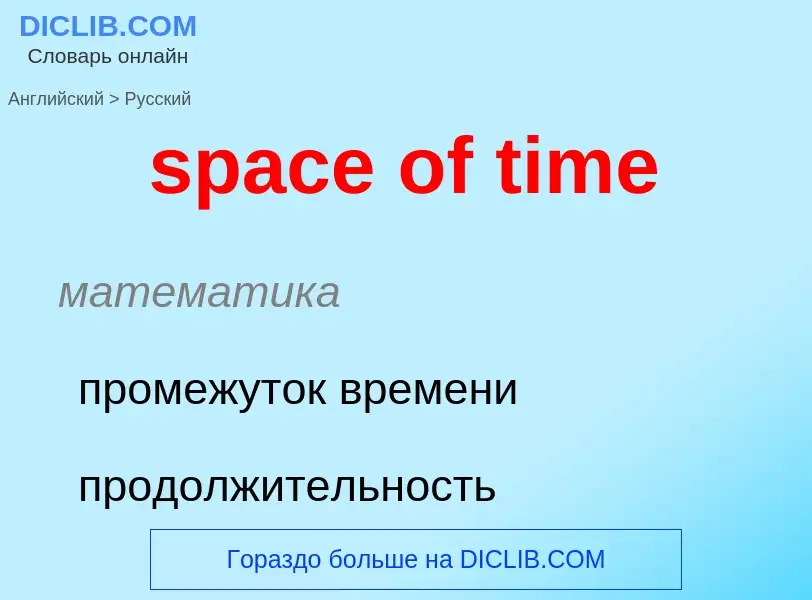Перевод и анализ слов искусственным интеллектом ChatGPT
На этой странице Вы можете получить подробный анализ слова или словосочетания, произведенный с помощью лучшей на сегодняшний день технологии искусственного интеллекта:
- как употребляется слово
- частота употребления
- используется оно чаще в устной или письменной речи
- варианты перевода слова
- примеры употребления (несколько фраз с переводом)
- этимология
space of time - перевод на русский
математика
промежуток времени
продолжительность
[speiʃiəu'temp(ə)rəl]
прилагательное
общая лексика
пространственно-временной
математика
пространственноподобный
Смотрите также
общая лексика
временноподобный
времяобразный
времяподобный
Смотрите также
математика
пространственно-временной континуум
[speis'taim]
общая лексика
пространство-время
существительное
физика
пространство-время
общая лексика
растяжение времени
[taimdai'leiʃ(ə)n]
общая лексика
замедление течения времени
растяжение времени (в теории относительности)
Определение
Википедия
The Mystery of Time and Space (commonly known as MOTAS) is a popular online graphic adventure game created by Jan Albartus (LOGAN). The game was produced using Macromedia Flash (now Adobe Flash) and was an early influential example of the escape the room genre. There are 20 levels of varying length, some consisting of a single room and others consisting of a large network of rooms. Though advertised as a constant work-in-progress with "new levels coming soon," MOTAS has not been updated since May 2008.
The game is currently available in 15 languages, including English, French, German, Japanese, and both traditional Chinese and simplified Chinese. There is also a moderated chat room available for players to discuss the game.
The levels have been noted for their jazz soundtrack, especially the Christmas-themed Level 8 and its jazz representation of "Santa Claus Is Coming to Town". Levels 9 and 13 play a MIDI version of "The Way You Look Tonight".


!['''here''']]. '''here''']].](https://commons.wikimedia.org/wiki/Special:FilePath/Accelerated relativistic observer with horizon.png?width=200)



!['''Click here to animate.''']] '''Click here to animate.''']]](https://commons.wikimedia.org/wiki/Special:FilePath/General relativity time and space distortion frame 1.png?width=200)











![page=60}} [https://books.google.com/books?id=AEdvt1gc3eMC&pg=PA60 Extract of page 60]</ref> page=60}} [https://books.google.com/books?id=AEdvt1gc3eMC&pg=PA60 Extract of page 60]</ref>](https://commons.wikimedia.org/wiki/Special:FilePath/Nonsymmetric velocity time dilation.gif?width=200)




